Although few people from abroad may know Dorayaki, it’s very popular wagashi (Japanese sweets) in Japan. Dorayaki is a type of wagashi that “Anko” (red bean paste) is sandwiched between two pancake-like buns. Buns resemble castella (Japanese style sponge cake). Wagashi (Japanese sweets) store Sōgetsu is one of the three most famous stores for Dorayaki in Tokyo. Some adding Seiju-ken and say the four most famous stores in Tokyo.
Sōgetsu
Basic information on Sōgetsu
Address of Sōgetsu is 2-15-16 Higashi-jūjō, Kita-ku. Here “Higashi” means east and “Kita” means north. The nearest station is Higashi-jūjō (Keihin-tōhoku line of JR). The sore is about two minutes walk from the South exit of Higashi-jūjō. After getting out of the South exit turn left and walk down the slope, you would find lined people or if get there very early, you would find soon the building of the store ahead.

People in line to enter Sōgetsu
Not so clean building on the left side is the that of Sōgetsu. And the store is on the first floor. In principle it opens 9:00 – 19:00 except Tuesday. It closes on Tuesday. There’s no space to eat within the store.
Sōgetsu names its Dorayaki “Kuromatsu” (Black pine). Price of Kuromatsu is 120 yen. And this price is the lowest among the four most famous stores in Tokyo. Kamejū’s Dorayaki is most expensive and it costs 360 yen. Seiju-ken’s Dorayaki is 220 yen for Ōban, 200 yen for Koban. Usagi-ya’s Dorayaki is 200 yen.
Just like other stores, though Sōgetsu sells various wagashi, “Kuromatsu” is especially famous. So, when the stock of Kuromatsu still remains, it puts up notice board on outside of the store.

Notice board on Kuromatsu
In the above picture, on the left board red boxed letters read “Today there are Kuromatsu”.
Slow proceed speed of waiting line
Proceed speed of waiting line for Sōgetsu was the slowest among the famous stores. In the cases of Kamejū or Seiju-ken, three or four employees took orders and wrapped or bagged the goods. So, before I enter the store, I suspected fewer employees might deal with customers at Sōgetsu.
On that day, it took about one hour before my turn to enter came. Entering and watching the inside of the store, I found out there were four or five (might be more) employees dealt with customers but volume of orders of each customer was quite large, as a result service time for each customer became long.
There may be two causes for this phenomenon. One is Kuromatsu’s low price. You can buy three times Kamejū’s Dorayaki with the same amount of money. The other is, unlike Seiju-ken, Sōgetsu doesn’t set the upper limit for the number of the purchase.
Appearance and taste of Sōgetsu’s Dorayaki
Appearance of Kuromatsu
The following is the picture of Kuromatsu Dprayaki.

Kuromatsu Dorayaki
Unlike other Dorayki, Kuromatsu isn’t in the shape of a disk. And the size of Dorayaki is smaller than those of the other three famous stores. Burn pattern on the surface of batter is characteristic. The name of “kuromatsu” (black pine) comes from that the burn pattern on the surface of the toasted batter resembles pattern on the trunk of black pine
The nest picture shows the cross section of Kuromatsu.

Cross section of Kuromatsu
You may notice that the cross section of batters of Kuromatsu is darker than those of the other three famous stores. Amount of Anoko is large next to Seiju-ken.
Taste of Kuromatsu
Ingredients of Kuromatus Dorayaki are sugar (includes “kokutō” (brown sugar or raw sugar)), azuki” (red bean), flour, honey, salt, “kanten” (made from certain seaweeds and it resembles agar), and baking soda. As Kuromatus doesn’t include artificial preservatives, its effective period for eating is 2 – 3 days for April to October, 3 – 5 days for the other months.
“Kokutō” is made from “satō-kibi” (sugar cane). To produce “kokutō”, first people squeeze sugar cane and get squeezed juice, then boil it down. As “kokutō” is not refined, various elements still remain in “kokutō” and these give characteristic flavor to the batter of Kuromatsu.
Sōgetsu uses “kokutō” and honey to make batter. As you see the cross section picture of Kuromatsu, “kokutō” gives dark color to the batter. And the batter of Kuromatsu has characteristic flavor and a hint of bitterness. In addition, as Sōgetsu toasts the inner side well to get burn on its surface, the inner side surface also has subtle bitterness. These contribute to reduce sweetness of “Anko”. The batter is soft and moist. The combination of the batter and “Anko” is in harmony.
When I ate Kamejū’s Dorayaki at first time, I felt its batter tasteless and wanted something more. When I ate Kuromatsu, I felt what I wanted in batter was exactly this flavor.
As you can confirm in the cross section picture of Kuromatsu, it has large amount of red bean paste next to that of Seiju-ken. But I didn’t feel sweetness so much as Seiju-ken’s. I believe that it comes from superb combination of batter and red bean paste. Personally, I think Kuromtasu tastes best.
Downsides of Sōgetsu are the following. Firstly, as it’s at the northern end of Tokyo, for most tourists, it takes time to get there. Secondly, you have to wait to buy Kuromatsu.

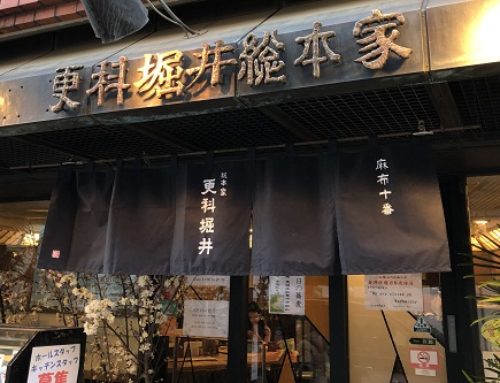
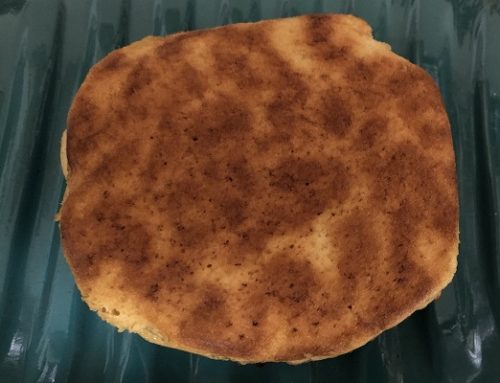
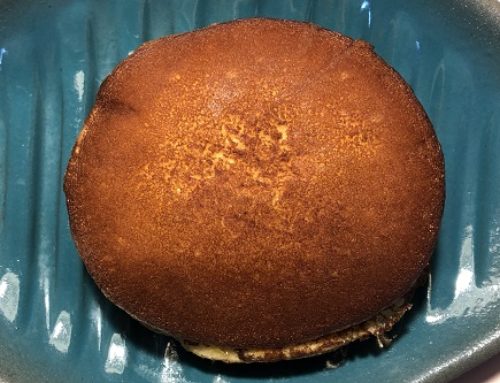
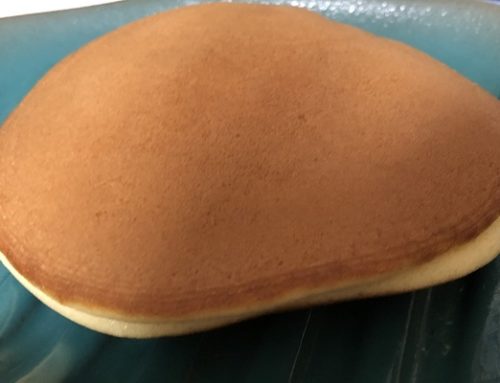
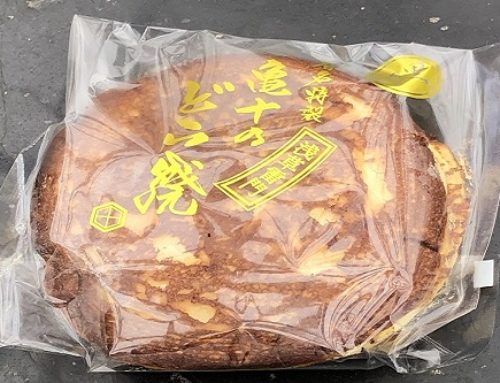
Leave A Comment